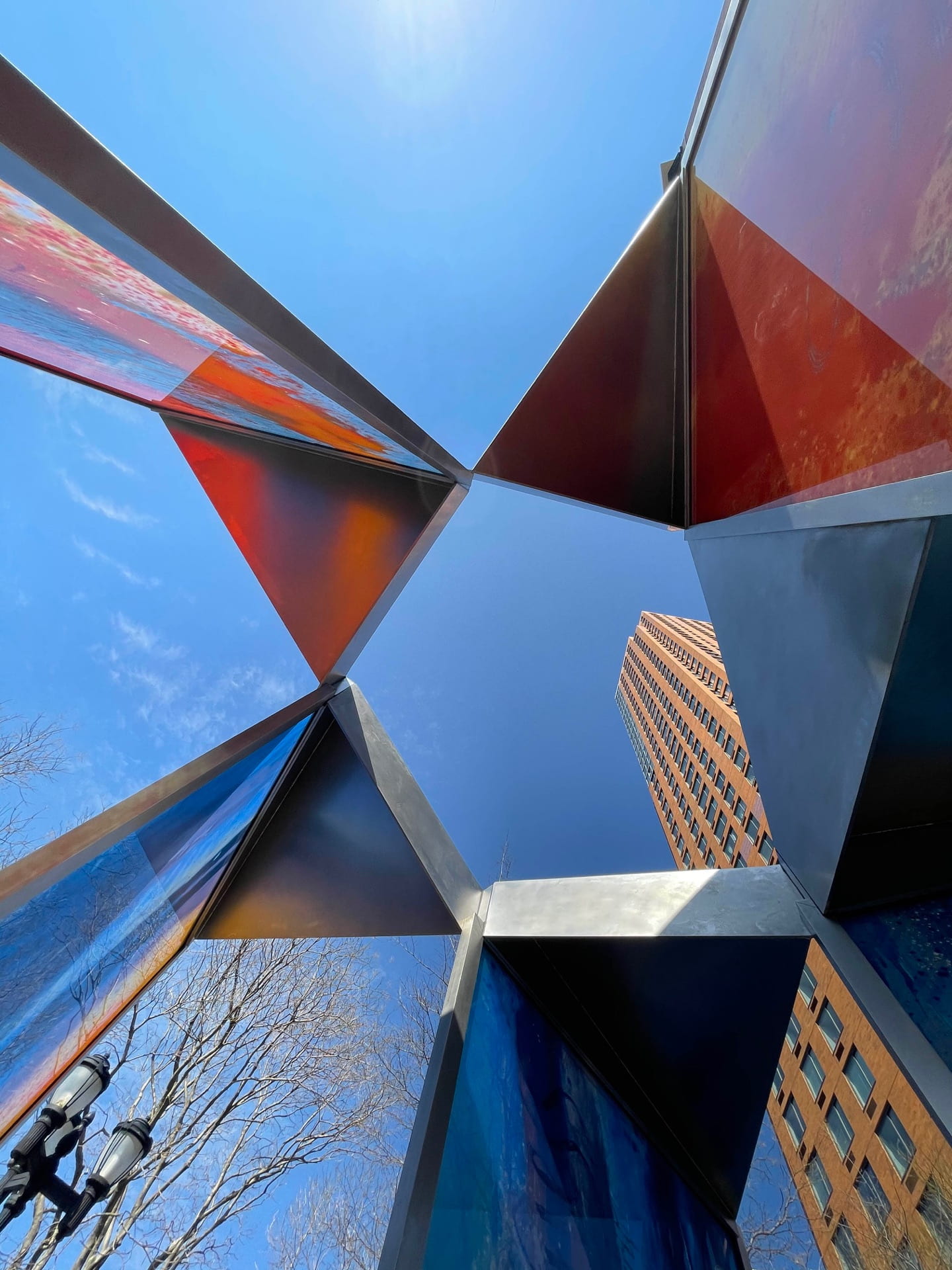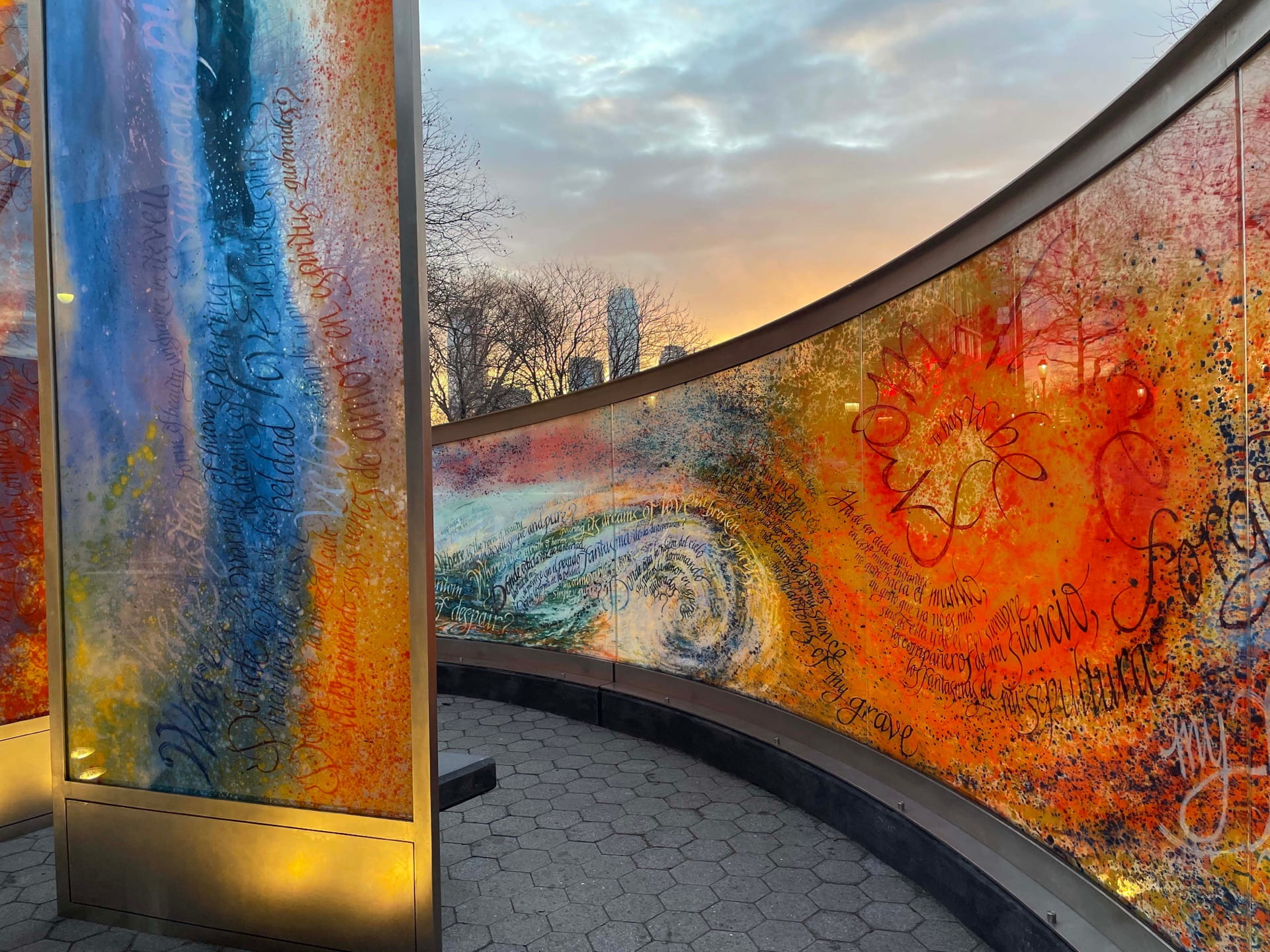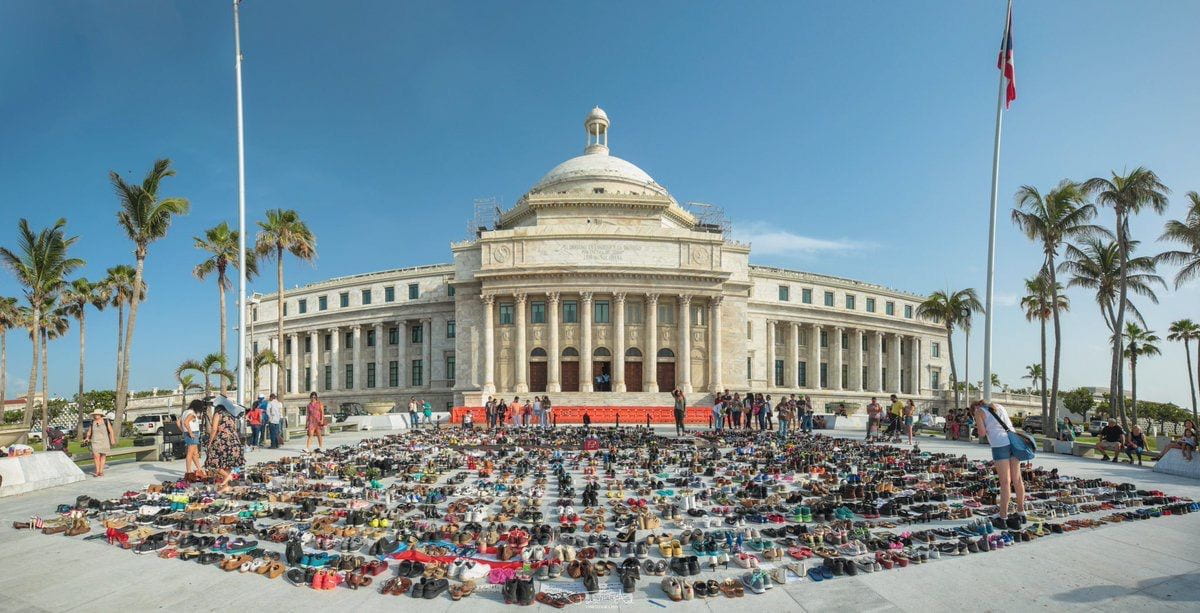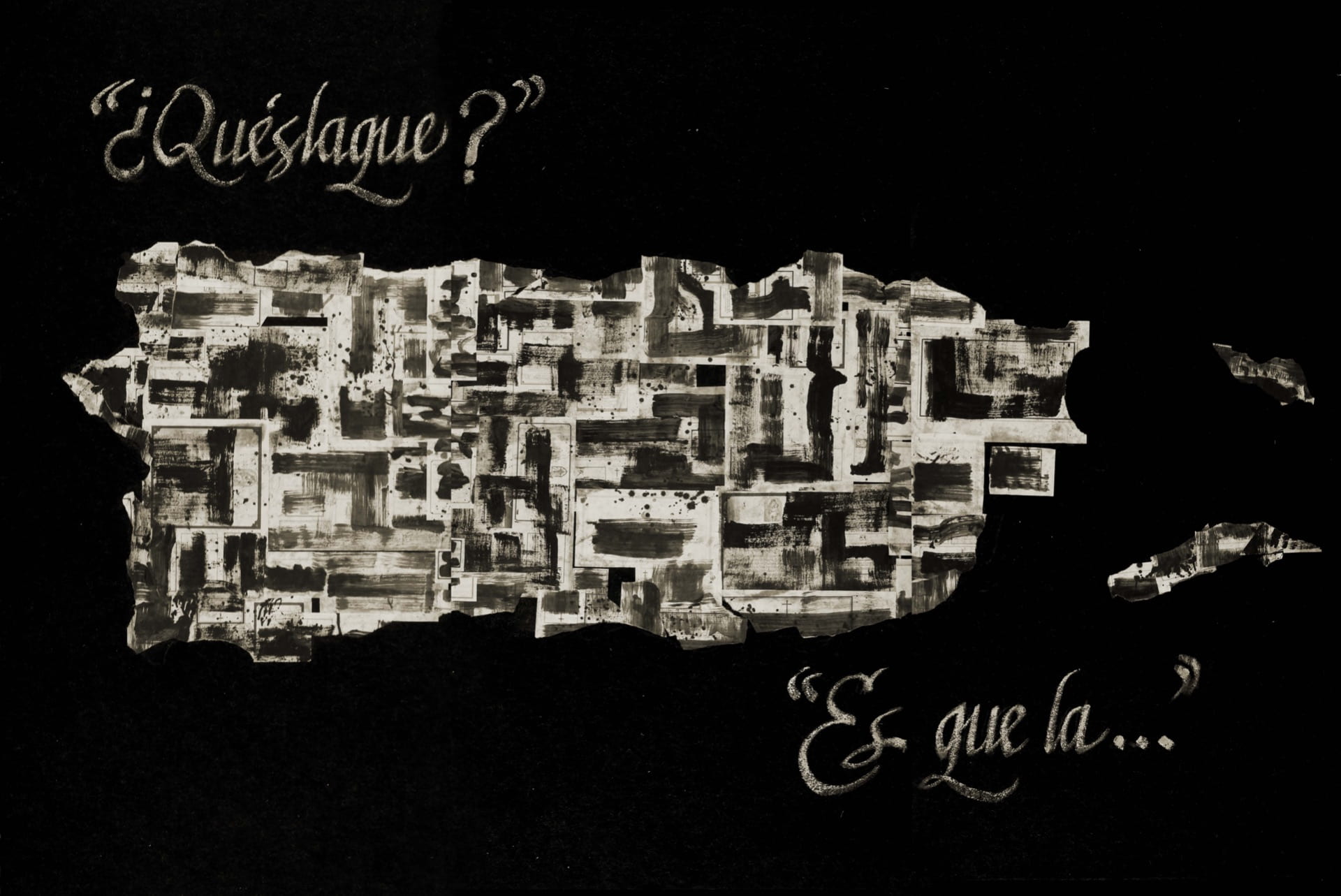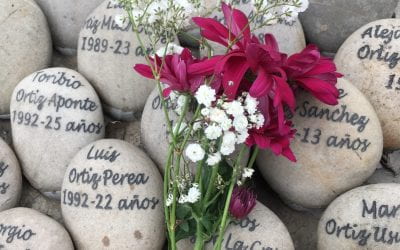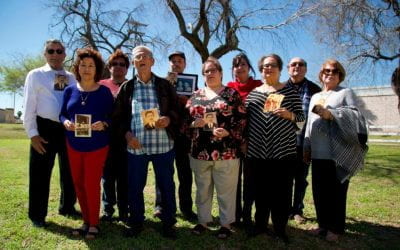My cry into the world
It was September 20, 2019. “One hundred, two hundred, three hundred, four hundred….” That was how we felt and that was how we counted in the face of the irremediable absences provoked by the sweep of Hurricane Maria through the island. But the governor of Puerto Rico, Ricardo Roselló (who would later resign his post), stubbornly clung to the “official” figure of 64 dead.
First, Harvard University, in collaboration with the Carlos Albizu University of San Juan and the Medical School of Ponce, Puerto Rico, calculated the number of lives lost as 4,645. This figure did not satisfy the government, which then contracted George Washington University for $305,000, this time paid from our ruined treasury to confirm to us months later what we already knew. The new official statistic, reluctantly accepted by the government was 2,975 deaths without taking into account long-term collateral victims whom we are still counting in names and numbers as to not forget.
Neither the federal government whose emissary, the then-President Trump showered us with rolls of paper towels, nor the island government that denied the death toll, fulfilled their duties. Both diligently hid their incompetence and irresponsibility until an authorized and costly external investigation unmasked their criminal lies.
It was the Army and the Puerto Rican diaspora that came to the rescue, joining our communitarian actions and rescue operations. Almost four years later, thousands of homes still have blue plastic carps as roofs as if the sky had collapsed on them, as if what happened with the hurricane had not been enough.
Sometime later, when my friend, the architect Segundo Cardona, tempted me with the open call of New York State for the creation of a commemorative monument to the victims of the disaster, I had already organized an exhibit entitled “¿Quéslaque? Es que la….” In Spanish, that’s short for the common question, ¿qué está pasando? Or “What’s up?” At the same time, in a Spanish word play, the reply, es que la, “It’s that..” both divides the syllables of esquela, which means obituary in Spanish, and also alludes to the Spanish acronym for the defunct status of Associated Free State or Commonwealth: ELA, a political formula which the U.S. Supreme Court recently declared inoperative, reaffirming its total control over the unincorporated territory of Puerto Rico. Our exhibit was made up of paint-collages on felt and linen with obituaries crossed off and endless numbers.
If I go on a bit about the antecedents of the creation of the monument in New York, the focus of this article, it is because I think this background will help to understand the meteorological climate, as well as the political, economic and cultural climate, that frames our work.
The exhibit “¿Quéslaque? Es que la…” remained for five weeks in the Photojournalism Workshop Gallery in San Juan. The monument “My cry into the world/Mi grito ante el mundo” in New York seeks to register there the results of the efforts of the Puerto Rican diaspora as evidence of our pain and resistance. A monument is an act of remembering that battles against time, combats hopelessness, reclaims the conscience.
This particular monument is not an emblem of victory, and much less a marker of power like the plentiful monuments that are now being questioned and torn down around the world. It is our desperate cry of poetry that crosses time, an airy structure that embraces space, vibrant colors that move from the island to embrace Manhattan. I can say all this now with certainty, but when my friend asked me to get together with him to compete, I said no. I argued that I refuse to participate in open calls and competitions because I am a sore loser. However, his insistence, together with a prior successful collaboration, overcame my resistance and he ended up convincing me.
We got together tormented as we were and, to find some form of relief, we threw ourselves into a regenerating tempest of ideas that culminated in the adoption of a spiral as a path, a snail, our nomadic home. Early on, the need for a text to guide our steps became apparent, to integrate calligraphy into image as we had done in the past.
I then remembered some verses of our national poet, Julia de Burgos. With the title of “Farewell from Welfare Island,” they are the only ones that I am aware of that she wrote in English during her prolonged and painful stay in New York until her death. I had read these verses for the first time more than a half century ago and now their searing rhythm together with their mournful lament returned like renewed hurricane-like gusts when the eye of a storm is passing through. We immediately decided that the poem would lead us on a transparent and colorful path in contrast to the “immense empire of solitude and darkness,” set forth in the poetic text.
I then gave myself the task of translating the poem into Spanish so that it could be read in both languages at the same time that would conjure up sands, waves, suns and the very hurricane itself. “My cry into the world/Mi grito ante el mundo” became the title, the voice of Julia on Welfare Island—renamed Roosevelt Island some time ago—where she was secluded and wrote the Puerto Rican lament of the diaspora at the beginning of our great migratory wave to the metropolis. Here is the poem and its translation:
Farewell from Welfare Island
It has to come from here,
right this instance,
my cry into the world.
The past is only a shadow emerging from
nowhere.
Life was somewhere forgotten
and sought refuge in depths of tears
and sorrows;
over this vast empire of solitude and darkness.
Where is the voice of freedom,
freedom to laugh,
to move
without the heavy phantom of despair?
Where is the form of beauty
unshaken in its veil, simple and pure?
Where is the warmth of heaven
pouring its dreams of love in broken
spirits?
It has to be from here,
right this instance,
my cry into the world.
My cry that is no more mine,
but hers and his forever,
the comrades of my silence,
the phantoms of my grave.
It has to be from here,
forgotten but unshaken,
among comrades of silence
deep into Welfare Island
my farewell to the world.
Despedida desde Welfare Island
Ha de venir desde aquí,
justo en este instante,
mi grito ante el mundo.
El pasado es tan sólo una sombra
que de la nada emerge.
La vida en algún lugar quedó olvidada
y refugio buscó en las profundidades
de llantos y de pesares;
sobre este inmenso imperio de soledad y tinieblas.
¿Dónde está la voz de la libertad,
libertad para reír,
para moverse
sin el pesado fantasma de la desesperanza?
¿Dónde la forma de la beldad
inconmovible y velada, simple y pura?
¿Dónde está la tibieza del cielo
derramando sus sueños de amor sobre espíritus
rotos?
Desde aquí ha de ser,
en este mismo instante,
mi grito ante el mundo
mi grito que no es mío,
sino de ella y de él por siempre,
los camaradas de mi silencio,
los fantasmas de mi tumba.
Tiene que ser desde aquí,
olvidada pero firme,
entre compañeros del silencio
dentro de Welfare Island
mi despedida de este mundo.
Ironically, our island of Puerto Rico later would disparagingly be called a “Welfare Island,” referring in an insulting way to federal funds received. The New York island— home to an insane asylum, a sanatorium and a jail—thus became twinned through its name with the poor Puerto Rico that we once were and have returned to being after an era of false progress. The migratory tsunami promoted by the island government in the 1940s and 50s to dispose of “populational excess” exported its misery and bet on a kind of nativist development that turned out to be one more colonial mirage.
As we entered into the planning and creation of our recent “Cry,” Segundo and I became aware of the multiple currents discovered on our journey, the rhythmic turns of an incessant whirlwind. The snail carrying its own home, the gusts of tropical color, the fleeting resonances of island transformation embodied in handwritten lettering that promises to make transparent and also to reflect upon on already innate existential contradictions between reality and illusion, between journeys and longing.
The silkscreen printing on glass from digitalized photography of canvases painted in acrylic leads in an ascending spiral to the top, which is crowned with the single star of our flag through which one can contemplate the towers that attempt to scrape the sky.
The pandemic delayed the construction of the monument, and as I write these lines, I still have not been able to gaze upon our finished work except in photos and videos. But if the selection of our winning proposal over 120 entries was surprising, even more surprising has been how enthusiastically the work has been received by our diaspora, which has already begun to claim the appropriation of space in Battery Park City as its own.
Marches and concerts, demonstrations and grievances announce that the community will make the south of Manhattan its northern star. Julia, a creature of water, emits her cry one more time from the faraway beach. In its apparent vulnerability, the house of crystal transforms into a fort and demands justice, in contrast to the the governor of San Juan’s residence, which is called the Fort because it was originally was one, but is now only the house of a compliant butler. Julia—mestiza (mixed race), Caribbean and Puerto Rican—cries out from the other shore her poetic passion, her liberating song.
I reread what I have written here and, suddenly, it becomes clear to me that the terrible consequences of Hurricane Maria—as well as the economic bankruptcy that preceded it, and the devastating intervention of the Fiscal Oversight Board imposed by the U.S. Congress that provoked a new migratory wave to the metropolis—are all manifestations of the same malady that has afflicted us for centuries: our colonial condition first with Spain after 1493 and later with the United States after 1898. The unhealthy dependence aggravates the effects of any crisis.
I cannot nor do I want to conclude this reflection without pointing out the importance and meaning of the ephimeral, collective and interactive monument convened by the playwright Nelson Rivera and author Rafael Acevedo in reaction to the official lies of the previous government after Hurricane Maria. Set up literally one day to another at the foot of the island capitol, a multitude of shoes (we could say shoes without feet instead of bare feet without shoes) were laid out in silent vigil in front of our impotent congress.
The protest of the shoes took place at the north side of the building, opposite nine bronze statues looking on from the south side. There they were, very erect and life-size, the presidents of the United States who had stepped foot on Puerto Rican soil, as did (the still applauded) Barack Obama. Significantly, the legislators have still not dared to include Donald Trump in this macabre comparsa.
Meanwhile, our monument of glass and metal recreates and remembers with its cry the disaster expressed in the poem that anticipates it. It is, above all, a call from Welfare Island, Borinquen and Manhattan to recognize and remedy the servitude of our nation here and there, yesterday, today and tomorrow.
Mi grito ante el mundo
Por Antonio Martorell
Fue el 20 de septiembre de 2019. “Cien, doscientas, trescientas, cuatrocientas…”. Así sentíamos y contábamos las irremediables ausencias al paso homicida del huracán María. Pero el todavía no renunciado gobernador de Puerto Rico, Ricardo Roselló, se empecinaba en la cifra “oficial” de 64 víctimas mortales.
La Universidad de Harvard primero, en colaboración con la Universidad Carlos Albizu de San Juan y la Escuela de Medicina de Ponce, Puerto Rico, estimó las vidas perdidas en 4,645. Esa cifra no satisfizo al gobierno que entonces contrató a la Universidad de George Washington por $305,000, esta vez pagados de nuestro ruinoso erario público para que, meses después, confirmara lo que todos sabíamos. La nueva cifra oficial, aceptada a regañadientes por el gobierno fue de 2,975 sin considerar las víctimas colaterales a largo plazo que todavía seguimos contando en números y nombres para no olvidar.
Ni el gobierno federal cuyo emisario, el pasado presidente Trump, nos obsequió un aguacero de rollos de papel toalla, ni el insular que negó los muertos, cumplió con su deber. Ambos diligentemente ocultaron su incompetencia e irresponsabilidad hasta que la autorizada y costosa investigación externa desenmascaró sus criminales mentiras.
Fueron el ejército y la diáspora boricua en el continente los que vinieron al rescate, sumándose a nuestras gestiones comunitarias en la operación de salvamento. Casi cuatro años después, miles de hogares todavía están techados con toldos plásticos azules como si el cielo se hubiera desplomado sobre ellos, como si tal cual sucedió no hubiera sido suficiente.
Tiempo después cuando el amigo y arquitecto Segundo Cardona me provocó con la convocatoria del estado de Nueva York para la creación de un monumento conmemorativo a las víctimas del siniestro, ya había montado una exposición titulada “¿Quéslaque? Es que la…”. Se redujo la común pregunta ¿qué está pasando?, a una sola palabra: ¿quéslaque?. A su vez, el reverso de la contestación, es que la, por un lado divide las sílabas de esquela, sinónimo de obituario, mientras por otro alude al ELA, abreviatura del difunto Estado Libre Asociado, fórmula política recién declarada inoperante por los tribunales de los Estados Unidos, reafirmando su poder omnímodo sobre el territorio colonial no incorporado de Puerto Rico. Nuestra exposición consistía de pinturas-collages sobre fieltro y lienzo con obituarios tachados y números sin fin.
Si me extiendo en estos antecedentes a la creación del monumento en Nueva York, la razón principal del presente escrito, es porque considero que ayudan a comprender el clima meteorológico tanto como político, económico y cultural que enmarca nuestro trabajo.
La exposición “¿Quéslaque? Es que la…” permaneció cinco semanas en el Taller de Fotoperiodismo en San Juan. El monumento “My cry into the world/Mi grito ante el mundo” en Nueva York pretende quedar allí fruto del empeño de la diáspora boricua como evidencia de nuestro dolor y resistencia. Un monumento es un acto de recordación que batalla contra el tiempo, combate la desesperanza, reclama la conciencia.
En esta ocasión no se trata de un emblema de victoria, mucho menos un marcador de poderío de los que abundan y son ahora cuestionados y derribados alrededor del mundo. Es el nuestro un grito desesperado de poesía que cruza el tiempo, airosa estructura que abraza el espacio, vibrantes colores que se mudan de isla para iluminar Manhattan. Esto lo afirmo ahora, pero cuando mi amigo me pidió que nos uniéramos para concursar, me negué. Le argumenté que rehusaba participar en competencias pues soy mal perdedor. Sin embargo, su vehemencia sumada a una grata colaboración anterior vencieron mi resistencia y terminó por convencerme.
Nos reunimos atormentados como estábamos y, para aliviarnos, nos volcamos en una regeneradora tempestad de ideas que culminó en la adopción de la espiral como camino, el caracol, nuestro hogar trashumante. Temprano surgió la necesidad de un texto que guiara nuestros pasos: optamos por integrar la caligrafía a la imagen que ya habíamos experimentado en el pasado.
Recordé entonces unos versos de la poeta nacional, Julia de Burgos. Con el título de “Farewell from Welfare Island”, son los únicos suyos que conozco escritos en inglés durante su prolongada y dolorosa estadía en Nueva York hasta su muerte. Los había leído por primera vez hace más de medio siglo y ahora su lacerante ritmo y plañidera queja regresaron como renovadas ráfagas huracanadas tras el paso del ojo ciclónico. Decidimos de inmediato que el poema nos conduciría por un sendero transparente y colorido en contraste con el “inmenso imperio de soledad y tinieblas” acusado en el texto poético.
Me di a la tarea de traducir el poema al español para que pudiera ser leído en ambos idiomas al mismo tiempo que configurara arenas, olas, nubes, soles y el mismísimo huracán. “My cry into the world/Mi grito ante el mundo” se convirtió en el título, la voz de Julia en Welfare Island—hace tiempo rebautizada Roosevelt Island—allí recluida y desde donde escribió el lamento borincano de la diáspora al comienzo de nuestra gran ola migratoria a la metrópolis. A continuación el poema y su traducción:
Despedida desde Welfare Island
Ha de venir desde aquí,
justo en este instante,
mi grito ante el mundo.
El pasado es tan sólo una sombra
que de la nada emerge.
La vida en algún lugar quedó olvidada
y refugio buscó en las profundidades
de llantos y de pesares;
sobre este inmenso imperio de soledad y tinieblas.
¿Dónde está la voz de la libertad,
libertad para reír,
para moverse
sin el pesado fantasma de la desesperanza?
¿Dónde la forma de la beldad
inconmovible y velada, simple y pura?
¿Dónde está la tibieza del cielo
derramando sus sueños de amor sobre espíritus
rotos?
Desde aquí ha de ser,
en este mismo instante,
mi grito ante el mundo
mi grito que no es mío,
sino de ella y de él por siempre,
los camaradas de mi silencio,
los fantasmas de mi tumba.
Tiene que ser desde aquí,
olvidada pero firme,
entre compañeros del silencio
dentro de Welfare Island
mi despedida de este mundo.
Resulta irónico que luego a nuestra isla se le llamara despectivamente una “Welfare Island” aludiendo de manera insultante a las ayudas federales recibidas. La isla neoyorquina que albergó manicomio, sanatorio y cárcel se hermanaba así en nombre y apellido al Puerto Rico pobre que fuimos y ahora volvimos a ser tras una era de falso progreso. El maremoto migratorio promovido por el gobierno isleño durante las décadas del cuarenta y cincuenta para disponer del “excedente poblacional” exportó la miseria y apostó a un desarrollismo criollo que resultó ser un espejismo colonial más.
Según nos adentrábamos en la planificación y creación de nuestro reciente “Grito”, Segundo y yo nos percatamos de las múltiples corrientes descubiertas en la travesía, los rítmicos giros del incesante torbellino. EL caracol con la casa a cuestas, los ramalazos del cromatismo tropical, las raudas resonancias del devenir isleño se plasmaban en letras manuscritas que prometían tanto transparentar como reflejar nuestra ya innata contradicción existencial entre realidad e ilusión, el viaje y la querencia.
La impresión serigráfica sobre vidrio a partir de la fotografía digitalizada de lienzos pintados en acrílico conduce en espiral ascendente a la altura techada por la estrella solitaria de nuestra bandera a través de la cual se pueden contemplar las torres que pretenden rascar el cielo.
La pandemia atrasó la construcción del monumento y al escribir estas líneas aún no he contemplado nuestro trabajo terminado salvo en fotografías y videos. Pero si sorpresiva fue la selección de la propuesta ganadora sobre ciento veinte concursantes, mayor aún ha sido la gran acogida de nuestra diáspora que ya comienza su apropiación del espacio en Battery Park City.
Marchas y conciertos, manifestaciones y reclamos anuncian hacer del sur de Manhattan su norte. Julia, criatura del agua, lanza su grito una vez más desde la lejana playa. En su aparente vulnerabilidad, la casa de cristal se convierte en fortaleza y exige justicia en contraste con la residencia del gobernador en San Juan llamada La Fortaleza porque lo era en su origen y ahora es tan solo la casa de un obediente mayordomo. Julia mestiza, caribeña y boricua grita desde la otra orilla su poética pasión, su canto libertario.
Releo lo anterior y, de repente, se me hace evidente que tanto las terribles consecuencias del huracán María como la bancarrota económica que le precedió, además de la intervención devastadora de la Junta de Supervisión Fiscal implantada por el Congreso de los Estados Unidos que provoca la nueva ola migratoria a la metrópolis, son todas manifestaciones de un mismo mal que nos aqueja desde hace siglos: nuestra condición colonial primero con España a partir de 1493 y luego con los Estados Unidos desde 1898. La enfermiza dependencia agudiza los efectos de cualquier crisis.
No puedo ni quiero concluir esta reflexión sin señalar la importancia y el significado del monumento efímero, colectivo e interactivo convocado por el dramaturgo Nelson Rivera y el escritor Rafael Acevedo en reacción a la mentira oficial del gobierno posterior al paso del huracán María. Ubicada de un día para otro, literalmente, al pie del Capitolio insular, una multitud de zapatos, (podríamos decir zapatos despiesados en vez de pies descalzos) se alinearon en silenciosa vigilia frente a nuestra impotente legislatura.
La protesta de calzados se emplazó en el lado norte del edificio en yacente oposición a las 9 estatuas de bronce que lo miran desde la fachada sur. Allí están, muy erectos y en su tamaño natural, los presidentes de los Estados Unidos que han pisado tierra puertorriqueña, aunque fuera por tan solo unas horas, como hizo [el tan aplaudido] Barack Obama. Significativamente, los legisladores no han osado, todavía, incluir a Donald Trump en tan macabra comparsa.
Mientras tanto, nuestro monumento de vidrio y metal recrea y rememora con su colorido clamor la catástrofe expresada en el poema que lo anticipa. Es, sobre todo, un llamado desde Welfare Island, Borinquen y Manhattan a reconocer y remediar el vasallaje de nuestra nación aquí y allá, ayer, hoy y mañana.
Spring/Summer 2021, Volume XX, Number 3
Antonio Martorell is a Puerto Rican from Santurce—a barrio of San Juan—by birth and a Puerto Rican by vocation, He gets pleasure from drawing, painting, engraving, writing, doing theatre, radio, television, film, dance, environmental installations, and unclassifiable structures. He is an Artist-in-Residence at the University of Puerto Rico and maintains his studio at La Playa de Ponce. Martorell was the Wilbur Marvin Visiting Fellow at the David Rockefeller Center for Latin American Studies at Harvard University during the spring semester of 2008.
Antonio Martorell es un Santurcino de nacimiento y puertorriqueño de vocación, Antonio Martorell se ha dado al placer de dibujar, pintar, grabar, escribir, hacer teatro, radio, televisión, cine, danza, instalaciones ambientales, y estructuras inclasificables. Martorell es Artista Residente de la Universidad de Puerto Rico, Cayey, y mantiene taller en la Playa de Ponce. Martorell se desempeñó como Wilbur Marvin Visiting Fellow en el David Rockefeller Center for Latin American Studies en la Universidad de Harvard durante el semestre invernal de 2008.
Related Articles
The Eye that Cries: Peru’s Unreconciled Memories
English + Español
In Lima, Peru, in the midst of Campo de Marte, a public park named after the god of war, a Zen space for reflection is guarded by a cast iron fence. El Ojo que Llora (“The Eye that Cries”…
Editor’s Letter: Monuments and Counter-Monuments
Cuba may be the only country on the planet that sports statues of John Lennon and Vladimir Lenin. Uruguay may be the first in planning a full-fledged monument to the victims of the Covid-19 pandemic.
A Monumental Battle for the Story of Texas
In 2016, I visited the Alamo, as part of my first real return to Texas in many years. I had mapped out a road trip with my brother Edmund Roberts. Though Edmund has long known of…

